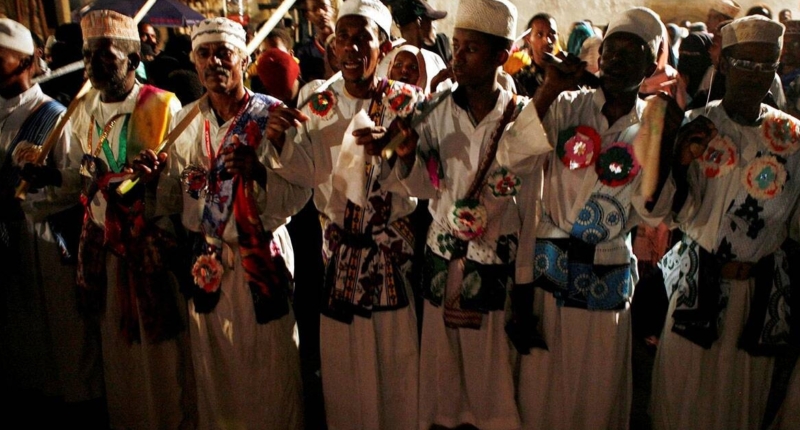A recent genetic study of the Swahili people in coastal East Africa has revealed how their complex ancestry played a significant role in the rise of their medieval civilization. The DNA analysis of 80 individuals from Kenya and Tanzania dating back to around 1250 to 1800 AD showed that more than half of the genetic input traced to female ancestors from Africa’s east coast, while a significant contribution also came from Persia and India. The findings challenge previous colonial assumptions about the origins of the Swahili people, highlighting their indigenous nature and African contributions without marginalizing the Persian-Indian connection. The Swahili culture reached its peak from the 12th to 15th centuries, with the evidence of Indian ancestry adding a new layer to the history of the East African coast.
Genetic Study Reveals Complex Ancestry of East Africa’s Swahili People
Researchers have used ancient DNA to trace the complex lineage of the Swahili people of coastal East Africa. The study shows that women from Africa and men from Persia played a significant role in the development of the Swahili civilization.
The researchers analyzed DNA from 80 people at five locations in Kenya and Tanzania that dated from around 1250 to 1800 AD. The genetic input in many of these individuals traced to female ancestors from Africa’s east coast, while a significant contribution also came from Asia. This contribution was found to be primarily from men from Persia, with 90% of the Asian genetic input coming from there, and 10% from India.
After 1500 AD, the Asian genetic contribution shifted to Arabian sources. The study also showed that the medieval Swahili people of city-states like Zanzibar and Mombasa exported goods such as ivory, gold, ebony, sandalwood, and slaves from the African interior to destinations across the Indian Ocean. They were also among the first practitioners of Islam in sub-Saharan Africa.
According to lead author and Harvard University geneticist, Esther Brielle, the sex-bias in the African-Asian admixture raises questions about social dynamics and gender roles. She explains that the situation could have been that powerful trading families in Africa and Asia formed economically beneficial marriage ties. This suggests that African women may have had more autonomy in choosing their partners for building a family, given that Bantu populations in East Africa often have more matrilineal tendencies.
The Swahili coast stretches roughly from Somalia’s capital, Mogadishu, to Tanzania’s Kilwa island and includes parts of Kenya, Malawi, and the Indian Ocean archipelagos of Zanzibar and Comoros.
This study provides insight into the complex ancestry of the Swahili people and highlights the importance of women from Africa and men from Persia in the rise of the medieval Swahili civilization.
Genetic Study Shows Complex Ancestry of East Africa’s Swahili People
A new genetic study shows that the Swahili people of East Africa have a complex ancestry that reflects their cosmopolitan nature. People of African and Asian origins began to mix in the region around 1000 AD, and the study reveals that this mixture played a significant role in the development of the Swahili civilization.
The Swahili language is of African origin, and the predominant religion of Islam was imported from the Middle East, while the cuisine shows Indian and Middle Eastern influences. The genetic findings challenge previous colonial assumptions about the origins of the Swahili people and their advancements being attributed to foreigners.
The study examined the DNA of 80 individuals from five sites in Kenya and Tanzania dating from around 1250 to 1800 AD. The research shows that more than half of the genetic input traced to female ancestors from Africa’s east coast, while a significant contribution also came from Asia, of which about 90% came from men from Persia – modern Iran – and 10% from India.
According to the study’s co-author, Stephanie Wynne-Jones, a professor of African archaeology at the University of York in England, the roots of the Swahili language can be traced back over 1,500 years as part of the Bantu language family, demonstrating the indigenous nature of this society.
The Swahili culture reached its apex from the 12th to 15th centuries, declining with the arrival of the Portuguese during the 16th century. The evidence of Indian ancestry adds a surprising new layer to the history of the East African coast.
There has been a long debate among some scholars over Swahili origins, though modern Swahili people have an oral history embracing both African and Asian roots. The genetic data provides new information that brings out the African contributions, and indeed the Africanness of the Swahili without marginalizing the Persian-Indian connection.
Don’t miss interesting posts on Famousbio









